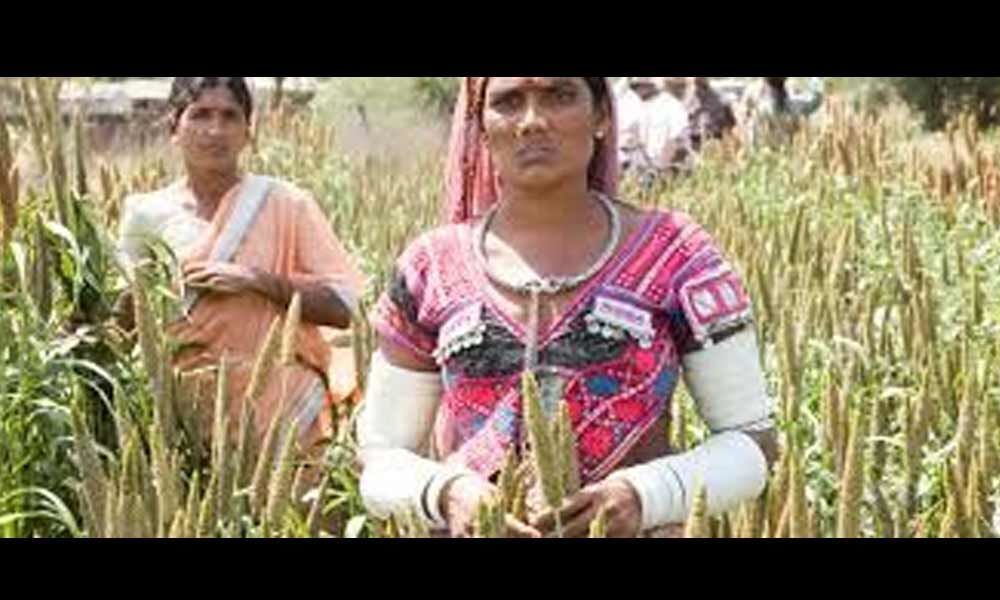Employment & incomes: Filling gender gaps

During the past decade India’s economic growth has been consistently higher than 7 per cent per annum and it is now the fastest growing large economy surpassing China.
During the past decade India's economic growth has been consistently higher than 7 per cent per annum and it is now the fastest growing large economy surpassing China.
However the moot question is whether this growth created enough jobs to the men and women? Although debate on unemployment statistics is unsettled and continues for some time until more authentic data become available, the estimates of Labour Force Participation Rate (LFPR), wages and earnings are non-controversial and available and needs closer scrutiny by policy makers.
The recent Oxfam report "Mind the Gap - The State of Employment in India" throws some light on the job situation in India.
The report mentioned that in 2015, 92 per cent of women and 82 per cent of men were earning a monthly wage less than INR 10,000, far below the Seventh Central Pay Commission (2015) recommendation of INR 18,000 per month.
Higher participation of women in unaccounted and unpaid work LFPR is an indicator of participation in only economic activities and exclude domestic chores like cleaning and unpaid care activities like child and old age care. Women spent a lot of time in household chores and unpaid care.
As a result, official LFPR statistics always report that female LFPR is less than that of men, although they spent lot of time in domestic chores and unpaid care.
Urban female workers earning more
Although urban female LFPR was lower than rural areas, their wage rates and earnings are better. Urban women mostly work in service sector, especially in education and retail sector. About 15 per cent of urban women are working in education sector.
About half of the women works in same industry as that of their husbands. Government schemes like access to drinking water, Ujjwala Scheme to provide LPG gas connection to households for cooking make possible women to spend more time in paid work.
Rural female workers are constrained
However in rural areas, still women's freedom to work is constrained by social customs, caste and class identities. About 75 per cent of rural women engaged in agriculture that too work as casual labourer and engage in activities like weeding, threshing, etc.
Women's work is bounded by their caste occupation. Dalit women mostly engaged in lower strata work like cleaning, dhobi community mostly engaged in washing clothes. Richer Baniyas own shops and small businesses while poorer ones serve as vendors along with their husbands. Imparting quality education and skill development might help in overcoming these constraints and help in occupational mobility.
Women targeted employment schemes
It is well known that most of the rural and agricultural development schemes are targeted to benefit men, as benefits are linked to land ownership (mostly held by male members of the family) rather than field operations (mostly done by females). However, one exception is employment guarantee scheme.
According to Economic Survey 2018, approximately 4.6 crore households were given employment under MGNREGA, of which 54 percent were women, though, some complain that the workers are getting less than statutory minimum wages.
Job oriented growth policy
Given that the jobs are going to be a big challenge in the coming decade, labour intensive industries needs to be identified and promoted for balanced growth. The jobs created needs to meet decent work standards like fair income, equal pay for work of equal value for both men and women, security in the workplace and social protection for families.
Formal social security system covers only a fraction of workforce. This needs to be expanded to cover all workers even in informal sector with special targets to cover women, socially and economically backward classes.
There is a need for simplifying the existing social security schemes to cover agricultural labourer, casual construction workers and workers participated in MGNREGA to spread the benefits of formal social security to the poorest of the poor in informal rural and urban sectors.
The author is Principal Scientist (Economics), ICAR-Centre Research Institute for Dryland Agriculture, Hyderabad














